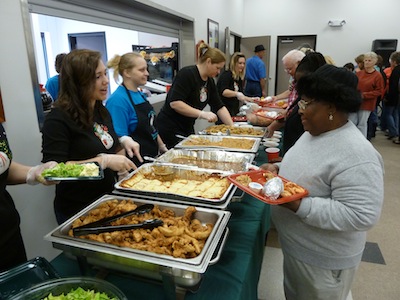 Coden, Alabama – On Saturday, this small coastal community became home to one of the largest solar power systems in the state of Alabama.
Coden, Alabama – On Saturday, this small coastal community became home to one of the largest solar power systems in the state of Alabama.
The 25,000 kilowatt system, powered by 108 solar panels, was installed in the Coastal Response Center, a hurricane shelter, community center, and home to the local group South Bay Communities Alliance, whose advocacy repaired and renovated the building after Hurricane Katrina.

